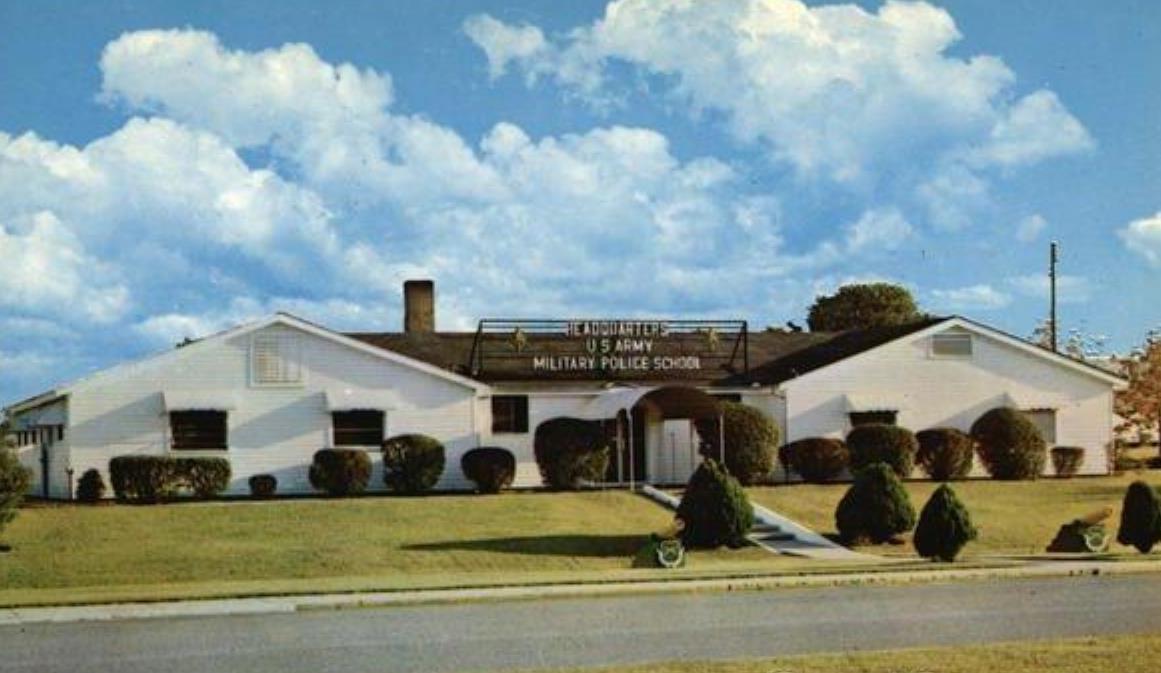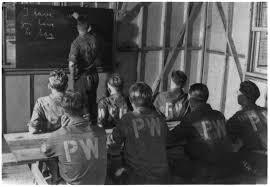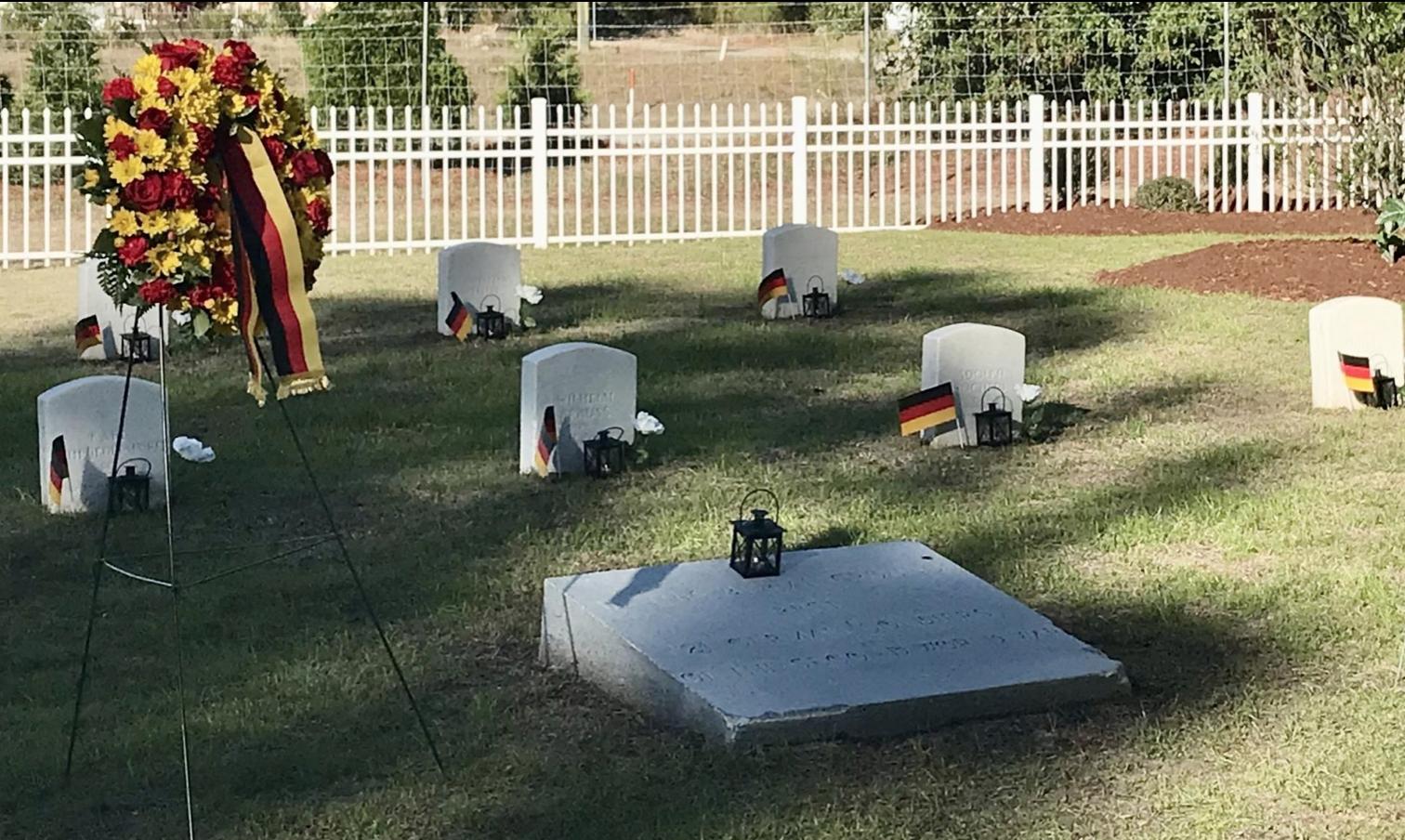
11 minute read
Discipline Barracks
Disciplinary Barracks for Convicted Criminals
Written by Jennifer Welman
Advertisement
programs and physical plans. The board did determine it would be better to use a different site and Beginning in 1870, state correction facility
recommended, although they were not charged with punishments included the use of ball and chain,
the responsibility, several alternatives.
flogging, shackling, tattooing or branding, solitary confinement and The board’s findings execution. In early 1871, the were presented to Army banned all punishments Congress by the except solitary confinement “If you want total security, go Secretary of War in and execution. This became an early 1874. The issue as the War Department to prison. There you’re fed, amendment was had very little say in these approved on May 21, state run facilities. clothed, given medical care 1874, and the all provisions set for Rock Brigadier General Thomas F. and so on. The only thing Island were instead Barr submitted a request to transferred to Fort consider the concept of a lacking is feedom.” Leavenworth, Kansas. military prison. Directed to In addition, existing investigate the situation by the Secretary of War, a board of ~Dwight D. Eisenhower buildings on site were to be modified as officers was sent to Canada to necessary to facilitate study the British military immediate prison system and their modes establishment of the of punishment. prison.
After thoroughly examining the British system, the board’s recommendations for a military penal system were approved at all levels and a bill submitted to Congress in January of 1872. After a proposed location change to Rock Island Arsenal, Illinois, for the first prison, the bill was passed and was signed by the president on March 3, 1873.
For numerous reason, including excessive security measures being required, the Secretary of War and the Ordnance Department objected to the location. Through the Adjutant General, a board was created to consider, by examination of best established state penitentiaries and prisons, the best correctional Remodeling, as well as building a wooden-fenced perimeter (stockade), was eventually deemed livable and the first prisoners arrived in September of 1875. Modifications were ongoing, including a stone quarry, which was used to replace the wooden wall with stone.
Vocational training began in 1877. Today it includes education, vocations ranging from stocking and clerical to varying repair training and job placement assistance for those whose sentences are ending.
Photographing of prisoners for the purpose of identification was set up by the War Department in 1888-89 to establish permanent photographic records.



During times of war, Georgia military installations have served as internment camps for enemies taken prisoner,
as well as for aliens residing in the United States whose activities were viewed as suspect by the federal government. These prisoners were, at the least, topics of interest for native Georgians; at the most, they contributed significantly to the state's economy, especially during World War II (1941-45).
During the Spanish-American War (1898), Fort McPherson, on the southwest side of Atlanta, held sixteen Spanish prisoners of war who were captured in Cuba. Their stay was short because of the war's brevity. They were housed in the post guardhouse, which later became the post chapel.

World War I
When the United States entered World War I in 1917, the War Department established a camp at Fort Oglethorpe, Georgia, at the site of the Battle of Chickamauga, just south of Chattanooga, Tennessee. This camp initially held German merchant seamen whose ships were captured in American harbors as the nation entered the conflict. (At this time there were three other prisoner of war camps in the United States: Fort McPherson, Georgia; Fort Douglas, Utah; and Hot Springs, North Carolina.) Inmates constructed the camp, which would eventually hold as many as 4,000 people, and neutral Swiss reports indicated that the inmates were provided with adequate food and other necessities. The merchant seamen were given the task of maintaining and running the installation but were given the additional option to work outside the camp in road construction or quarrying operations. Those who did not accept this supposed option were placed in punishment facilities and given half-rations. As antiGerman sentiment grew, more German and Austrian aliens were arrested for "suspicious" activities; among them were eminent poets, scholars, businessmen, scientists, and musicians. This group was also interned at Fort Oglethorpe.
By mid-1918 the seamen were removed to Fort McPherson, where another camp of more than 1,300 men was established. Six hundred of the enlisted men at Fort McPherson

Continues on page 14


In May 1941 it was announced that the blue denim fatigue uniform would be phased out and replaced with an olive drab, herringbone cotton twill (HBT) uniform. The new uniform was single breasted with five black metal tack buttons in front, plus a waist band with two additional buttons. The jacket also had a notched lapel with a fall collar, and two patch-type breast pockets with a split pleat in the center and a flap secured by a single metal tack button. Source: https://historydaily.org/ww2-us-army-uniforms
Fort Leavenworth was among the first prisons to use this positive means of identification.
The prison came under fire, for many of the same reasons it was created in the first place. A bill, introduced to the House of Representatives in 1894-95 ended the War Department’s control of the prison and passed it on to the Department of Justice, becoming a United States Penitentiary on July 1, 1985.
The War Department was having second thoughts about the transfer of the military prison to the Department of Justice, as this transfer did not alleviate any of the original issues. On February 1, 1906 Fort Leavenworth again came under the control of the Department of War Department. It was later leased out to the Department of Justice due to overcrowding, but returned to the War Department on November 16, 1940.
With crowded conditions and lengthy prisoner waiting lists, the Disciplinary Barracks began to branch out in 1907. Some remained open only a short time, while others remain open today as state or federal prisons. In the meantime, Fort Leavenworth underwent reconstruction.
During World War II, with the exception of those facing life or very long sentences, soldiers who were overseas were held there as it was deemed unfair to return criminals to the safety of U.S. soil while honorable soldiers remained far from home. Had this policy not been in place, the Disciplinary Barracks would have burst at their seams.
Today, of the branches, only Fort Leavenworth remains a United States Disciplinary Barracks. And it is the only maximum security confinement facility of its type for the military. Sources:
• http://www.cityofgrovetown.com/251/Fort-
Gordon-History
• http://www.dtic.mil/dtic/tr/fulltext/u2/ a437867.pdf
• https://en.wikipedia.org/wiki/ List_of_U.S._military_prisons
Opened 1907: • Alcatraz Island (Pacific Branch) Opened 1914: • Fort Jay, New York (Atlantic Branch) Opened 1944: • Green Haven, New York (Eastern Branch) • North Camp Hood, Texas (Southern Branch) • Fort Missoula, Montana (Northwestern Branch) Opened 1945: • Camp Gordon, Georgia (Southeastern Branch) • Jefferson Barracks, Missouri (Central Branch) • Milwaukee, Wisconsin (Northern Branch) • Fort Benjamin Harrison, Indiana (Midwestern Branch) • Camp Haan, California (Southwestern Branch) • New Cumberland, Pennsylvania (East Central Branch) • Pine Camp, New York (Northeastern Branch) Opened 1947: • Lompoc, California

https://cityofgrovetown.com/251/Fort-Gordon-History were then sent to satellite labor camps to work on farms. Those who remained caned chairs or worked on road construction. Officers and the wealthy were never forced to work. Fort Oglethorpe was left largely with the German cultural and intellectual elite. This civilian group, while complaining frequently to the Swiss observers about their internment, found intellectual and creative stimulation in their associations with each other and produced remarkable performances ranging from a musical rendition of Beethoven's symphony Eroica to a dramatic production of Henrik Ibsen's play Ghosts. They also printed a newsletter, the profits from which were given to poorer prisoners, and they established a school in which courses ranging from Japanese to physiology were taught.
Though the war ended in 1918, many inmates in Georgia camps were not freed and deported until May 1919. Some 300 were detained at Fort Oglethorpe until April 1920.
World War II
During World War II prisoners of war were again interned in Georgia. By 1943 German, Austrian, and Italian POWs were held at Fort Oglethorpe, Fort Benning, Fort Gordon, Camp Stewart (later Fort Stewart), and Camp Wheeler near Macon. The Italians were usually housed separately from the Germans and Austrians. The larger camps were constructed to house 2,000-4,000 prisoners. POWs were treated according to the rules of the Geneva Convention, a circumstance that, according to numerous anecdotes, was surprising to them. They were supplied with adequate food, sleeping quarters, and medical care,
and they were permitted camp canteen privileges and educational opportunities. They published newsletters

One Italian and 21 German prisoners of war are buried at Fort Gordon.
Source: Erika Wells)
A platoon of U.S. soldiers fires a salute in honor of a German prisoner of war who died from injuries suffered in an accident. Some of his comrades (left) salute in the American manner and were joined by American officers and enlisted men at the ceremony on Nov. 2, 1943. (Used by permission of The Associated Press)
Hard-line
and produced theatrical performances. They were also permitted to display national symbols of pride and to conduct funerals with military honors for the deceased. Prisoners not only maintained their camps but also performed such tasks as painting, mowing grass, and washing vehicles on the main installations.
As in World War I, installation camps had satellite camps of from 250 to 750 men that supplied workers for labor-poor southern industry and agriculture, and prisoners received half-rations and experienced activity restrictions if they refused to work. At one time before the War Department streamlined the camp system, Camp Gordon had satellite camps as far away as North Carolina and Florida. Workers harvested cotton, tomato, and peanut crops, and they worked in numerous industries, including pulpwood and lumber. By mid-1944 the shirts emblazoned with the large letters "PW" were a common sight in Georgia. Some German and Italian POWs befriended soldiers and farmers, and they were invited into Americans' homes for meals and entertainment.
Nazi groups in many camps led work stoppages and produced other tensions on a relatively steady basis. They maintained power over other German inmates through appeals to patriotism, intimidation, secret kangaroo trials, and murders of those whom they deemed suspicious. U.S. government officials attempted to identify those hard-line Nazis and intern them separately, but these efforts were less than successful. In 1944 prisoners at Camp Gordon secretly convicted a fellow inmate and strangled him because he was thought to have informed Americans about an impending work disruption and because he appreciated American jazz. His two murderers were tried and executed by the U.S. government in 1945.
With the war nearing an end, in 1944 the War Department began a reeducation program, which included photos and films of Nazi atrocities, to reorient inmates' thinking. Some prisoners also received lessons in reading English and in American history and government. When the war ended in 1945 all prisoners of war, with the exception of those serving sentences in U.S. penal institutions, were sent home. Some applied in their home countries to return to Georgia, and a few began to return during the 1950s, both to escape the devastation in Europe and to pursue employment opportunities.

FGHM Newsletter
Honor the History of Army Communication
Save Our Story
Fort Gordon’s museum is going away sometime in 2021.
In order to preserve the substantial historical contributions to the nation, educate our citizens and prepare the next generation of Americans for the next century, we intend to create an enduring live and virtual museum in coordination with the US Army in Augusta, Georgia at an off-post location near Fort Gordon.
The new museum will house a historical collection, preserve and present exhibits and historically significant artifacts that reveal the rich history of innovation by our citizens as they served the nation.

Save Our StoryPreserve the History of Army Communication
From Signal Corps to Cyber Branch,
Augusta is home to many compelling pieces of Army communications history. Help save our story and keep the history of Army communication here in Augusta.

Telephone from Hitler's personal library
Our Mission
To preserve the regimental history of the Signal Corps, the Cyber Branch and other tenant units which have served at Fort Gordon as part of an enduring Military Museum in Augusta.
Our Vision
To establish a state-of-the-art live and virtual museum that preserves the history of the Army Signal Corps, tells the story of innovation and ingenuity of the Signal Corps and Cyber Branch, educates the current generation, and prepares future generations for service to the nation.

